This post contains affiliate links. This means I will make a commission at no extra cost to you should you click through and make a purchase [ “As an Amazon Associate, I earn from qualifying purchases.” ]. Read the full disclosure here.
KIA Warning Lights GuideMechanic.Com As a proud Kia owner, it is vital to familiarize yourself with the various warning lights that may illuminate on your vehicle’s dashboard. These warning lights serve as crucial communication tools, alerting you to potential issues with your Kia’s systems.
Understanding what each warning light means can help you take appropriate action and prevent any further damage to your vehicle.
In this comprehensive guide, we will delve into the different warning lights that may appear on your Kia’s dashboard and provide you with valuable insights on how to address them effectively.
KIA Warning Lights: Check Engine Light
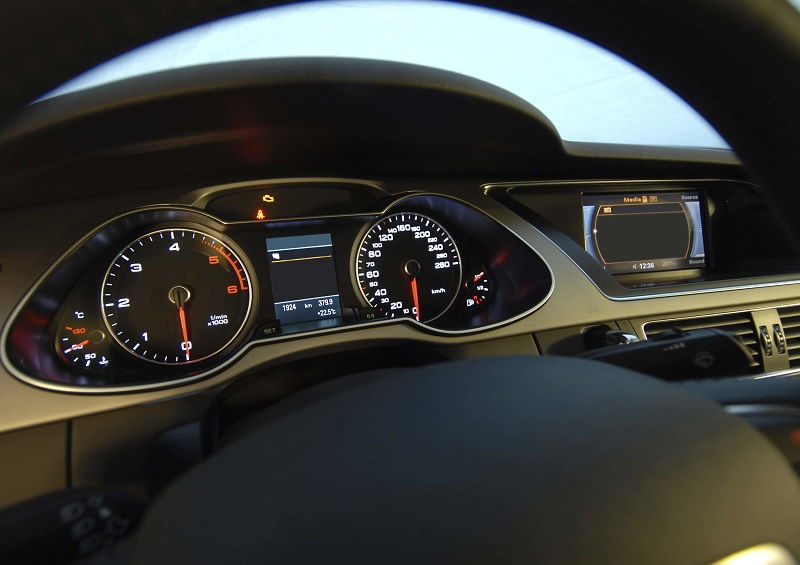
The check engine light is one of the most common warning lights that Kia owners may encounter. This light, often shaped like an engine, indicates a problem with your Kia’s engine or its related systems. It is essential not to ignore this warning light, as it can signify a range of issues, from minor to more serious problems.
Potential Causes
See Also: Kia Sportage Catalytic Converter
There are numerous potential causes for the check engine light to illuminate. These can include a loose gas cap, a faulty oxygen sensor, a malfunctioning catalytic converter, or even a problem with the vehicle’s ignition system. It is crucial to diagnose the specific cause to address the issue effectively.
Steps to Resolve
When the check engine light appears, the first step is to check the gas cap and ensure it is properly tightened. If the light persists, it is advisable to have the vehicle’s diagnostic system scanned to retrieve any error codes.
These codes can provide valuable insights into the specific issue, allowing for more accurate repairs. Depending on the diagnosis, it may be necessary to visit a certified Kia technician who can further investigate and resolve the problem.
KIA Warning Lights: Battery Light
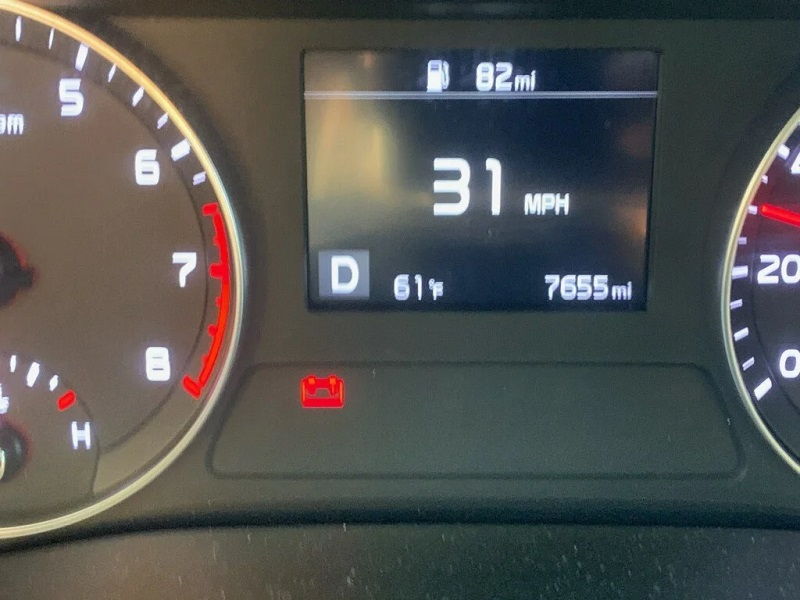
When the battery light illuminates on your Kia’s dashboard, it typically signifies a problem with the charging system. This warning light, resembling a battery, should not be ignored, as it can lead to battery failure and potentially leave you stranded.
Potential Causes
There are several potential causes for the battery light to come on. It could indicate a faulty alternator, a weak battery, a loose or corroded battery cable, or even a problem with the voltage regulator. Identifying the specific cause is crucial for resolving the issue effectively.
Steps to Resolve
When the battery light appears, it is important to check the battery connections to ensure they are secure and free from corrosion. If the connections are fine, it may be necessary to have the battery and alternator tested to determine their overall condition.
If either component is found to be faulty, replacement may be necessary. Seeking assistance from a certified Kia technician is recommended to ensure proper diagnosis and resolution of the issue.
KIA Warning Lights: Oil Pressure Light
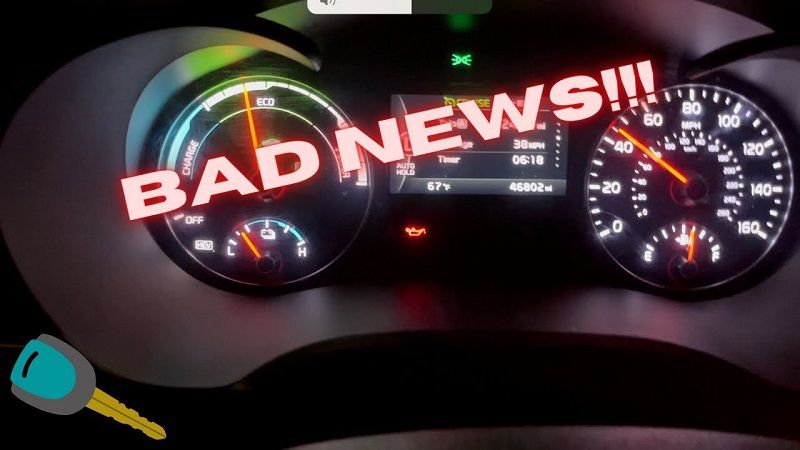
The oil pressure light, resembling an oil can, indicates low oil pressure in your Kia. Ignoring this warning light can lead to severe engine damage, so it is crucial to address the issue promptly and effectively.
Potential Causes
Low oil pressure can have several potential causes. It may be due to a leak in the oil system, a faulty oil pump, or even insufficient oil levels. Identifying the specific cause is vital for resolving the issue and preventing further damage.
Steps to Resolve
If the oil pressure light illuminates, the first step is to check the engine oil level using the dipstick. If the oil level is low, adding the recommended oil can help resolve the issue.
However, if the oil level is sufficient, it is essential to have the oil pressure checked by a certified Kia technician. They can diagnose the cause of the low oil pressure and recommend the necessary repairs or replacements to restore proper oil circulation and pressure.
KIA Warning Lights: Brake System Warning Light
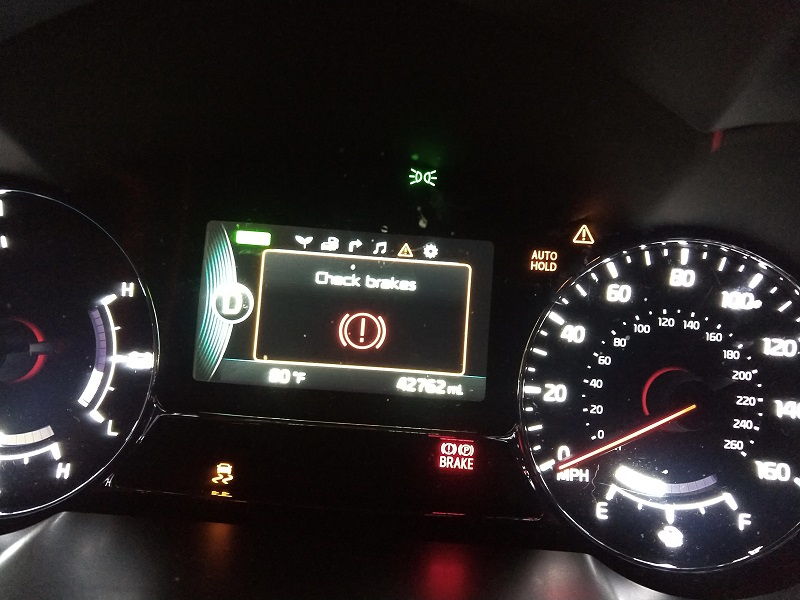
The brake system warning light, often depicted as an exclamation mark within a circle, alerts you to a problem with your Kia’s brake system. Ignoring this warning light can compromise your safety and the effectiveness of your vehicle’s braking capabilities.
Potential Causes
There are several potential causes for the brake system warning light to come on. It may indicate low brake fluid levels, worn brake pads, a malfunctioning brake sensor, or even a hydraulic system issue. Identifying the specific cause is crucial for resolving the issue effectively.
Steps to Resolve
When the brake system warning light appears, it is important to check the brake fluid level and ensure it is within the recommended range. If the fluid level is low, adding the appropriate brake fluid can help address the issue temporarily.
However, it is essential to have the braking system thoroughly inspected by a certified Kia technician to identify the underlying cause and perform any necessary repairs or replacements. This ensures the continued safety and optimal performance of your vehicle’s braking system.
KIA Warning Lights: Tire Pressure Monitoring System (TPMS) Light
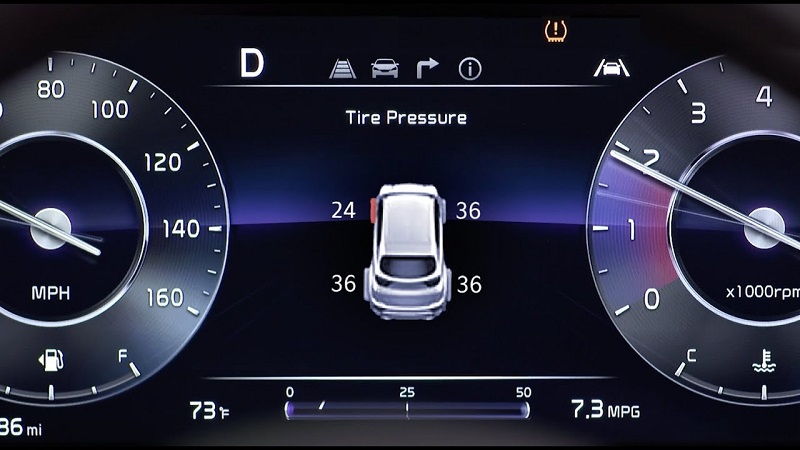
The TPMS light, often depicting a tire with an exclamation mark, is designed to alert you to low tire pressure in your Kia. Maintaining proper tire pressure is crucial for your safety, fuel efficiency, and overall tire performance.
Potential Causes
See Also: 2013 Kia Optima Battery: Jumpstarting Your Kia Optima
Low tire pressure can have various potential causes. It may be due to a slow leak, a puncture, or even seasonal changes in temperature. Understanding the potential causes can help you address the issue effectively and prevent any further damage to your tires.
Steps to Resolve
When the TPMS light illuminates, it is important to check the tire pressure in all four tires using a reliable tire pressure gauge. If any tire is significantly underinflated, it may be necessary to inflate it to the recommended pressure level.
However, if the tire pressure consistently decreases, it is advisable to have the tire inspected for any leaks or punctures. A certified Kia technician can assist in diagnosing the cause and performing any necessary repairs to ensure proper tire pressure and overall tire health.
KIA Warning Lights: ABS Warning Light
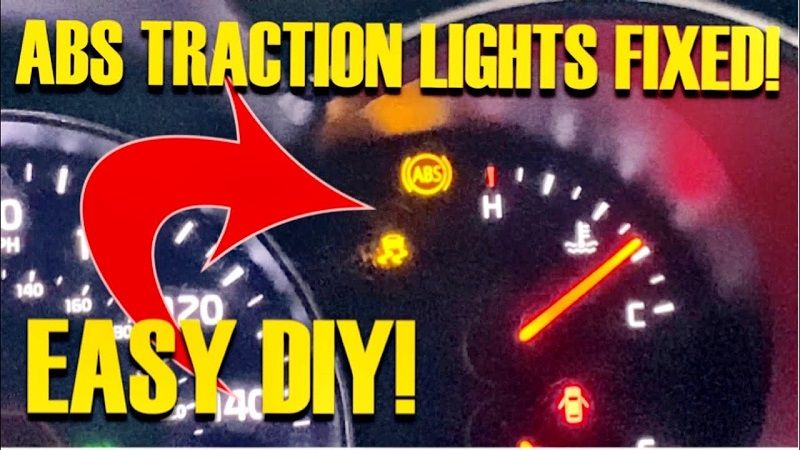
The ABS warning light, typically labeled ABS, indicates a problem with your Kia’s anti-lock braking system. This system plays a vital role in maintaining control and stability during sudden braking situations, so it is crucial to address any issues promptly.
Potential Causes
The ABS warning light may come on due to various potential causes. It could be a faulty ABS sensor, a malfunctioning ABS module, or even a problem with the brake fluid pressure. Identifying the specific cause is essential for resolving the issue effectively.
Steps to Resolve
If the ABS warning light appears, it is advisable to check the brake fluid level and ensure it is within the recommended range. If the fluid level is low, adding the appropriate brake fluid can help resolve the issue temporarily.
However, it is essential to have the ABS system inspected by a certified Kia technician who can diagnose the cause of the warning light and perform any necessary repairs or replacements. This ensures the continued functionality and effectiveness of your vehicle’s anti-lock braking system.
KIA Warning Lights: Airbag Warning Light
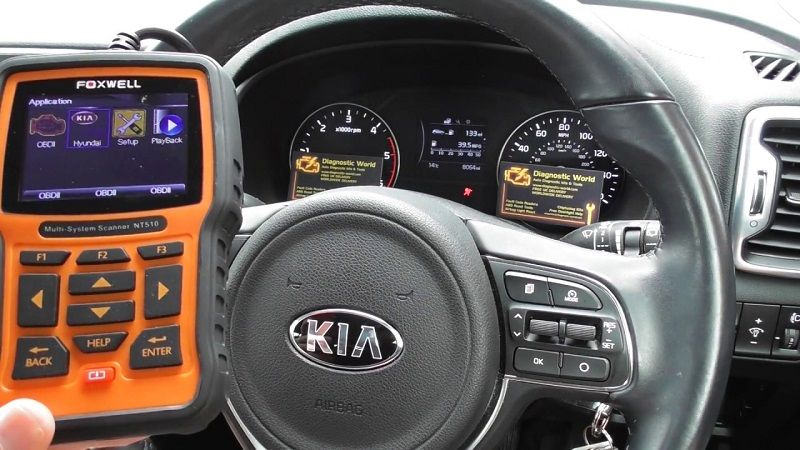
The airbag warning light, often depicting a person with a deployed airbag, indicates a problem with your Kia’s airbag system. This system is crucial for your safety in the event of a collision, so it is important to address any issues promptly.
Potential Causes
The airbag warning light can come on due to various potential causes. It may be a faulty airbag sensor, a malfunctioning airbag module, or even a problem with the electrical connection. Identifying the specific cause is crucial for resolving the issue effectively.
Steps to Resolve
If the airbag warning light appears, it is advisable to have the airbag system inspected by a certified Kia technician. They have the necessary expertise and equipment to diagnose the cause of the warning light and perform any necessary repairs or replacements.
It is essential not to attempt any repairs yourself, as the airbag system is highly sensitive and requires specialized knowledge for proper handling.
KIA Warning Lights: Power Steering Warning Light
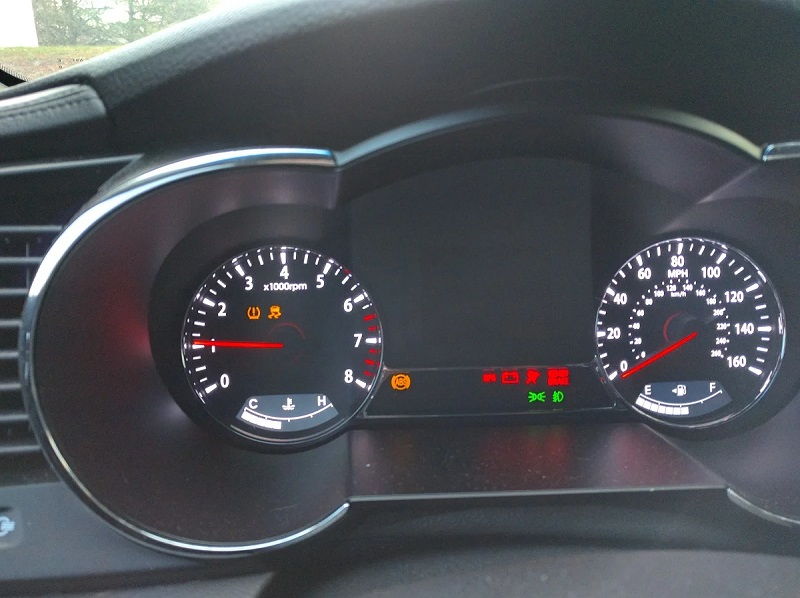
The power steering warning light, resembling a steering wheel with an exclamation mark, suggests an issue with your Kia’s power steering system. This system plays a critical role in ensuring smooth and safe steering, so addressing any problems promptly is essential.
Potential Causes
There are several potential causes for the power steering warning light to come on. It may be due to a low power steering fluid level, a faulty power steering pump, or even a problem with the power steering belt. Identifying the specific cause is crucial for resolving the issue effectively.
Steps to Resolve
If the power steering warning light appears, it is important to check the power steering fluid level and ensure it is within the recommended range. If the fluid level is low, adding the appropriate power steering fluid can help address the issue temporarily.
See Also: Kia Catalytic Converter Problems
However, if the fluid level is sufficient, it may be necessary to have the power steering system inspected by a certified Kia technician. They can diagnose the cause of the warning light and perform any necessary repairs or replacements to restore smooth and safe steering.
KIA Warning Lights: Traction Control System (TCS) Warning Light
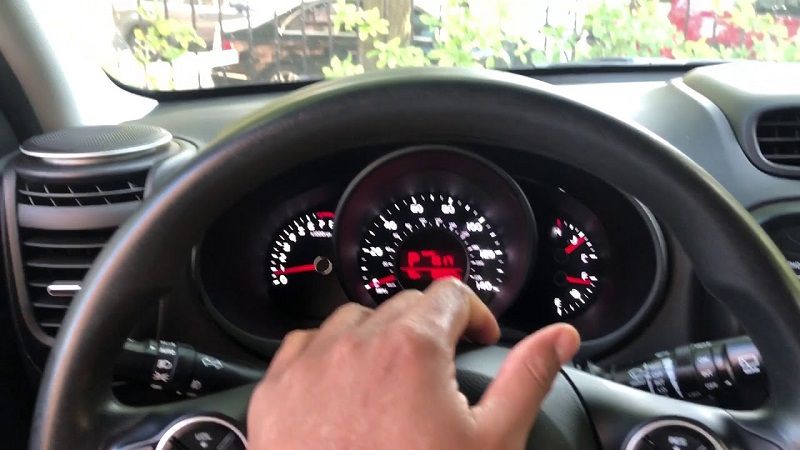
The TCS warning light, often labeled TCS or TC, indicates a problem with your Kia’s traction control system. This system helps maintain stability and control during challenging driving conditions, so addressing any issues promptly is crucial.
Potential Causes
There are various potential causes for the TCS warning light to come on. It may be due to a faulty wheel speed sensor, a malfunctioning TCS module, or even a problem with the vehicle’s electronic stability control system. Identifying the specific cause is essential for effectively resolving the issue.
Steps to Resolve
If the TCS warning light appears, it is advisable to check the tire conditions and ensure they are properly inflated and have adequate tread. Incorrect tire conditions can trigger the TCS warning light.
If the tires are in good condition, it may be necessary to have the TCS system inspected by a certified Kia technician. They can diagnose the cause of the warning light and perform any necessary repairs or replacements to restore the functionality of the traction control system.
KIA Warning Lights: Fuel Level Warning Light
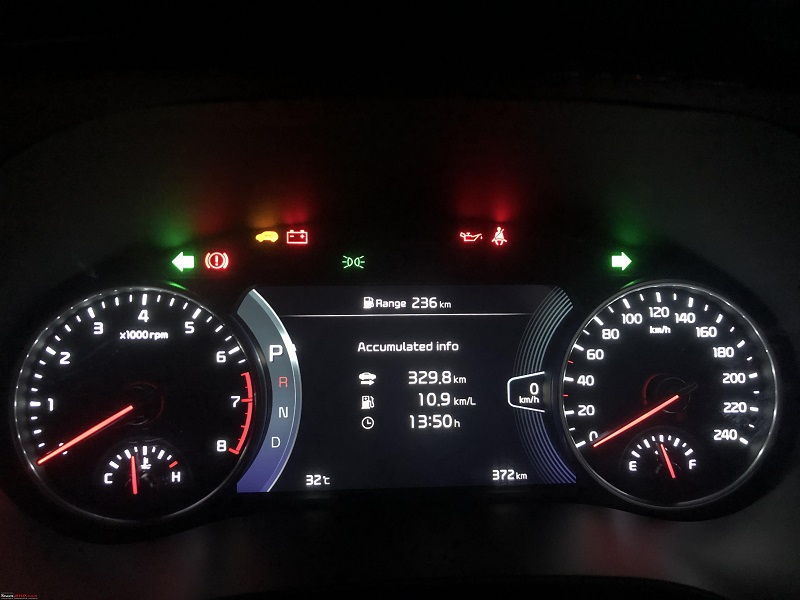
The fuel level warning light, resembling a gas pump, illuminates when your Kia’s fuel level is low. Ignoring this warning light can result in running out of fuel, causing inconvenience and potentially damaging the fuel system.
Potential Causes
The fuel level warning light typically illuminates when the fuel level drops below a certain threshold. It serves as a reminder to refuel your Kia to avoid running out of fuel.
However, if the warning light persists even after refueling, it may indicate a problem with the fuel level sensor or the fuel gauge itself.
Steps to Resolve
When the fuel level warning light appears, it is essential to locate the nearest gas station and refuel your Kia as soon as possible.
It is recommended to keep track of your vehicle’s fuel consumption and refill the tank before the fuel level drops too low. If the warning light continues to illuminate even after refueling, it may be necessary to have the fuel system inspected by a certified Kia technician.
They can diagnose any potential issues with the fuel level sensor or the fuel gauge and perform the necessary repairs or replacements.
KIA Warning Lights: Conclusion
In conclusion, understanding the warning lights that may appear on your Kia’s dashboard is essential for maintaining the overall health and safety of your vehicle.
Each warning light serves as a valuable indicator of potential issues with various systems in your Kia, from the engine to the brakes and beyond.
By familiarizing yourself with these warning lights and their potential causes, you can take appropriate action and prevent more significant problems from arising.
Remember, when a warning light appears, it is crucial not to ignore it. Ignoring a warning light can lead to further damage, costly repairs, and compromise your safety on the road. Consult your Kia owner’s manual for specific guidance on each warning light and follow the recommended steps to address the issue.
See Also: Kia Stinger Blue: Performance Capabilities Of Kia Stinger
If you are unsure about the cause or unsure of how to resolve the problem, it is always recommended to seek assistance from a certified Kia technician. They have the expertise, experience, and specialized tools to diagnose and repair any issues effectively.
By staying informed about the warning lights in your Kia and taking proactive measures to address them promptly, you can enjoy a worry-free driving experience while ensuring the longevity and optimal performance of your vehicle.
Related video of Kia Warning Lights: Your Guide to Understanding and Resolving Dashboard Notifications
- Vegan Food Trucks for Sale by Owner - July 12, 2025
- Ice Cream Food Trucks for Sale - July 11, 2025
- Breakfast Food Trucks for Sale - July 11, 2025
